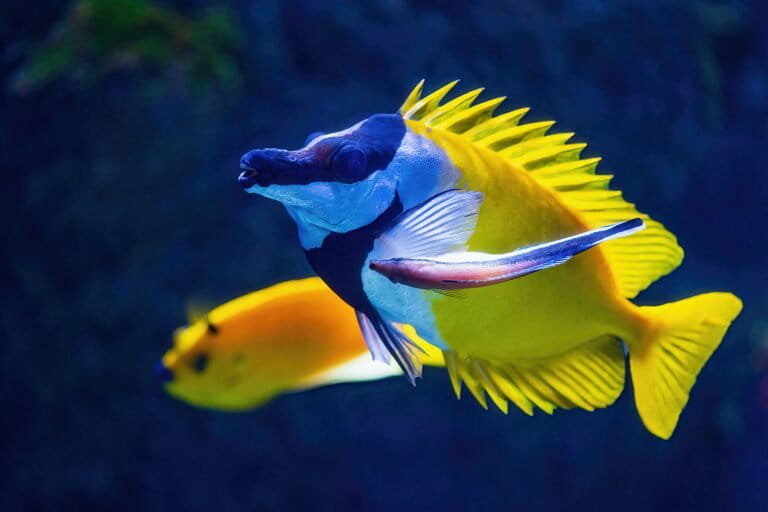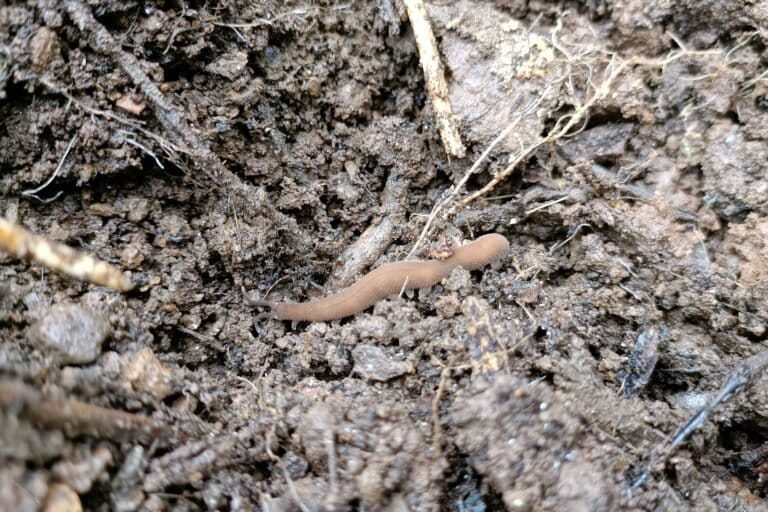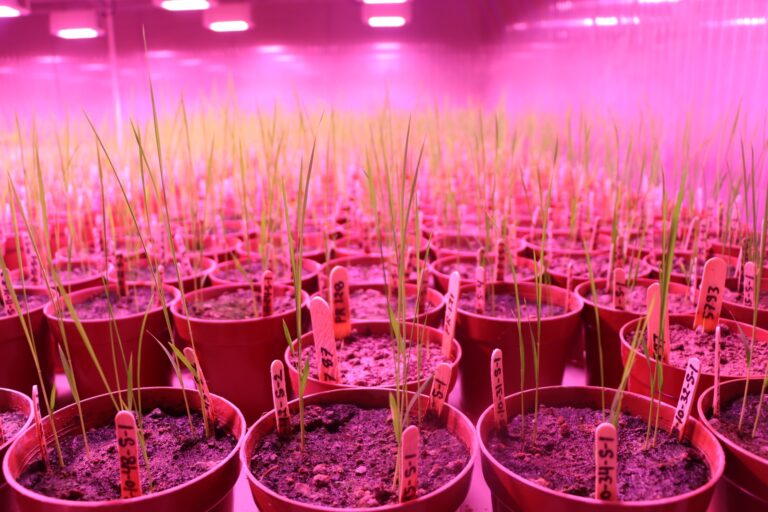- Mutualisms are positive interactions between two species. However, this term is not the same as cooperation or symbiosis.
- Mutualisms are some of the most common ecological interactions. They are also responsible for some of the key events in the evolution of life on earth, such as the formation of eukaryotic cells, which are the modern-day cells that all animals, plants and fungi are made of.
- Mutualisms can be of many types, involve just two or many partners, and may or may not require direct interactions between the partners.
When members of two species have a relationship that is beneficial to both, the interaction is called mutualism. The term was first used by zoologist and paleontologist Pierre Joseph van Beneden to mean ‘mutual aid among species’ in his book Animal Parasites and Messmates, published in 1876.
However, the term ‘mutualism’ has been confused with other words such as cooperation and symbiosis.
How is mutualism different from cooperation and symbiosis?
In evolutionary terms, cooperation is a broad label for beneficial interactions that can exist between two or more individuals of the same species or of different species. Therefore, mutualism, which refers to the positive interactions between creatures of different species, is a subset of the interactions that fall under the ambit of cooperation.
Symbiosis, which is another term that is often used interchangeably with mutualism, also describes a vast array of interactions. However, the true meaning of symbiosis comes from its Greek roots ‘syn’ (together) and ‘bios’ (life) which translates roughly into ‘life companions’ and refers to organisms that live in close contact with each other. This, however, does not necessarily mean that the organisms have a positive relationship with each other. For example, many parasites such as tapeworms and lice live almost entirely inside or on their human hosts. Therefore, they are symbiotes of humans, but they are certainly not mutualists. Similarly, many of the microorganisms that live on our skin and in our guts are commensals — which means that they are our symbiotes — but do not harm us like parasites.
Going by these examples, a symbiotic relationship can either be parasitic (where one organism benefits from the association and the other is harmed), commensal (where one benefits, but the other gains no benefit nor is it harmed), or mutualistic (where both organisms benefit from their interactions).

Why are mutualisms important?
Mutualisms are some of the most common interactions found in nature and occur in both terrestrial and aquatic habitats. In fact, mutualisms are so common that according to evolutionary ecologist D. H. Janzen, “mutualisms are the most omnipresent of any organism-to-organism interaction”. This thought is echoed by evolutionary biologist Judith Bronstein, who further iterates that “every organism on earth is probably involved in one or several mutualisms during its lifetime”.
Some of the most widespread mutualisms are those between plants and their pollinators. Plants rely on pollinators to ferry pollen between flowers for reproduction. Pollinators receive food (either as nectar or the pollen itself) as a reward for this service. Other commonly occurring mutualisms are those between plants and nitrogen-fixing bacteria (where plants provide food and shelter to bacteria that convert atmospheric nitrogen into minerals that plants can absorb) and plants and fungi called mycorrhizae (where plants provide food and shelter to fungi that help the plants to absorb micronutrients like phosphorous and iron from soil).
Humans and some gut bacteria such as specific strains of Escherichia coli or E. coli have mutualistic relationships where the human provides food and shelter to the bacteria, which provide their human hosts with vitamin K and some essential nutrients.
Another well-known mutualistic association is that of some ants and termites with fungi, where the ants/termites literally cultivate fungi by providing specific fungi with food (usually cellulose from plant material like wood and leaves) to grow on and protect the fungi by weeding out or killing off competing fungi. The fungi, in turn, digest the cellulose and convert it into a form that the ants can eat. Another mutualism involving ants is that between ants and aphids, where ants protect aphids from predators and the aphids reward the ants with drops of sweet sugary liquid called honeydew.
In aquatic systems, some of the most well-known mutualisms are those between corals and photosynthetic organisms called zooxanthellae. The corals provide zooxanthellae with shelter and minerals, while the zooxanthellae provide the corals with oxygen, glucose, glycerol, and amino acids, which are products of photosynthesis.

Mutualistic interactions are thought to have led to the creation of Eukaryotic cells. These cells, which make up all animals, plants and fungal organisms, contain a nucleus within their genetic material which is compartmentalised. The endosymbiotic theory suggests that eukaryotic cells, which originated from archaeal cells, engulfed an ancient bacterium that used oxygen for energy. Eventually, the engulfed bacterium became a mutualist and endosymbiont (endo = Greek for internal; symbiont = Greek for life companion), that allowed the archaeal cell to use oxygen to generate energy; this endosymbiote is believed to be the ancestor of mitochondria seen in modern-day eukaryotic cells. Similarly, chloroplasts in plant cells are also thought to have evolved from cyanobacteria that lived inside ancient eukaryotes as endosymbiotes.
These examples prove that mutualism is not just a widespread phenomenon that helps organisms survive, but also a major driver of evolution in the natural world.
How are mutualisms classified?
Mutualisms can be classified in many different ways. One classification divides mutualisms into direct and indirect types. Direct mutualisms are those in which the interactions between the mutualistic organisms requires them to come into direct contact with each other, for example, plant–pollinator mutualisms. Direct mutualisms, in turn, can also be divided into symbiotic mutualisms (where the two mutualists live in very close physical contact with each other for long periods of time like the fig–fig wasp mutualisms, plant–mycorrhizal/nitrogen fixing bacteria mutualisms, human–gut bacteria mutualisms) and non-symbiotic mutualisms (where the two mutualists need not have extended physical contact). Examples of non-symbiotic mutualisms are common in transport mutualisms such as pollination (where pollinators usually transport pollen in return for food) and seed dispersal (where animals usually transport seeds in return for food in the form of fruit). Other forms of non-symbiont mutualisms are protection mutualisms such as ant–aphid mutualisms.
Indirect mutualisms are those in which the mutualists need not come into direct contact or even interact directly with each other. For example, parasitoids—which are insects that lay their eggs inside other host insects such that the parasitoid larvae eat the host from the inside-out—and plants are indirect mutualists. This is because parasitoids lay eggs in the herbivorous insects and caterpillars that feed off plants; often, these parasitoids use plant volatiles (chemicals that plants use to warn other plants that a herbivore is chewing on them) to locate prey. Therefore, in this system, although there is no direct communication or contact between the mutualists, they benefit from each other. Such a system is akin to an ‘enemy-of-my-enemy-is-my-friend’ situation. Other forms of indirect mutualisms can mirror the ‘friend-of-my-friend-is-also-my-friend’ situation. An example of this is seen among flowering plants in areas where pollinators are scarce. Therefore, many plants flower synchronously and mimic each other to create a large showy exhibition that can attract more pollinators to their area.

Apart from direct and indirect mutualisms, another classification uses the number of partners involved in a mutualism to differentiate between different systems. In this classification, there can be monophyly (where each species engages in a mutualism with only one other species), which is common in symbiotic mutualisms, and polyphyly (where each partner can engage with many other partner species), which is common in most transport and non-symbiotic mutualisms.
Yet another classification system divides mutualisms according to how dependent the partners are on each other; therefore, they can be obligate or facultative. Obligate mutualists are totally and exclusively dependent on each other and cannot switch partners, whereas facultative mutualists have more diffuse relationships and can switch to other partners who can provide similar services or resources.
Another form of classification views mutualisms as ‘biological barter systems’ and divides them into resource-resource, service-resource, and service-service relationships. In resource-resource relationships like those between plants and mycorrhizae or nitrogen-fixing bacteria, the two partners barter resources — the plants provide carbohydrates to the fungi and bacteria, which provide the plants with minerals containing phosphorus and nitrogen. In service-resource relationships, one partner provides a service (such as pollination or seed dispersal) and the other provides a resource (food in the form of nectar/pollen or fruit). Another example of this relationship is found in cleaning mutualisms like those between oxpeckers and large mammals (like rhinos and deer) or small cleaner wrasse and larger fish. In these systems, one partner (the cleaner) provides cleaning services by removing parasites and other irritants from the client partner. The cleaners usually eat the parasites and obtain a resource (food) in return for their services. A service-service relationship exists between sea anemones and anemonefish, although this is only one part of their mutualism. The anemones have stinging tentacles that protect the fish from predators and the fish protect the anemones from butterflyfish which eat the anemones.

Relationships that come at a cost
All mutualisms come with costs as well as benefits. While the benefits are usually perceived easily, the costs are often hidden. For example, in plant pollinator systems, many pollinators such as bees also collect pollen as a food along with honey. For a plant, making extra pollen to ensure pollination becomes an added cost to the energy it spends in making nectar as a reward for its pollinators. In ant–plant protection mutualisms, where the ants protect the plants from herbivores in return for food and shelter, the cost of the ants’ protection can sometimes be very expensive as some species of ants can literally turn into thugs. Pollinators are scared away or killed, and flowers are destroyed by these ants to encourage their host plants to produce more food and shelter for the ants.
In brood pollination mutualisms such as those of the fig–fig wasp and yucca–yucca moth systems, plants trade seed production for pollination services. In both systems, the pollinators have a close symbiotic relationship with their host plants, where, in return for pollination services, the insects are rewarded with brood sites for their offspring. These brood sites are sheltered inside the fruit of the plants, where the pollinator larvae develop by eating some of the growing seeds of the plant.
In addition to these costs, many mutualisms are also susceptible to exploitation – for example, some pollinators like carpenter or bumble bees turn into nectar robbers. These bees provide no pollination services; instead, they drill holes at the base of flowers and consume nectar. Wasps, ants, hummingbirds and even bats have been known to become nectar robbers.
Apart from these, mutualism can also impose abstract costs on organisms. For instance, plants dependent on specific pollinators may not be able to colonise or thrive in areas where their pollinators cannot survive. Another abstract cost is a loss in evolutionary flexibility that is seen in symbiotic mutualisms. In such cases, sexual reproduction in some organisms is so constrained by their mutualisms, that they become highly inbred and eventually lose large chunks of their genomes.
Do mutualisms evolve?
Mutualisms are dynamic systems that are constantly evolving as their partners respond to the climate change that is being caused by global warming and human-mediated modifications to environments. Global warming has led to the bleaching of vast tracts of corals as they lose their zooxanthellae partners. Human activity has dissolved the protection mutualism between acacia trees and ants in Africa because large herbivores were kept away from the trees in a bid to conserve the trees. These are just two examples of thousand-year-old mutualisms that have succumbed to anthropogenic changes.
However, as climate change has a widespread effect on the distributions and survival of many species, this may provide scientists with a unique opportunity to study the evolution of mutualisms on a grand scale.
Read more: Living root bridges in Meghalaya and a pollinating fig wasp
Banner image: Oxpeckers on a Cape buffalo. The oxpecker feeds on the ticks on the buffalo, which in turn benefits from tick removal. Photo by Ian Linsay/Pixabay.














